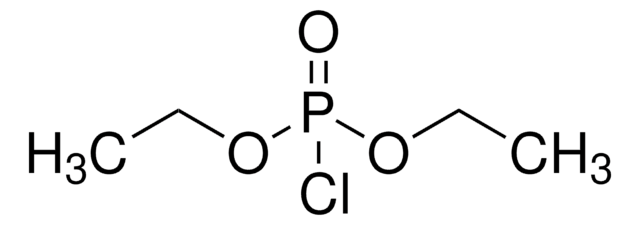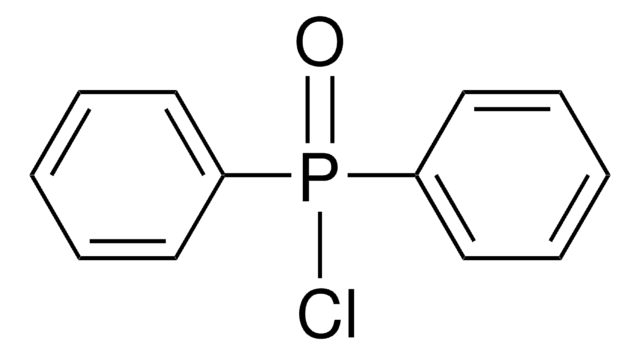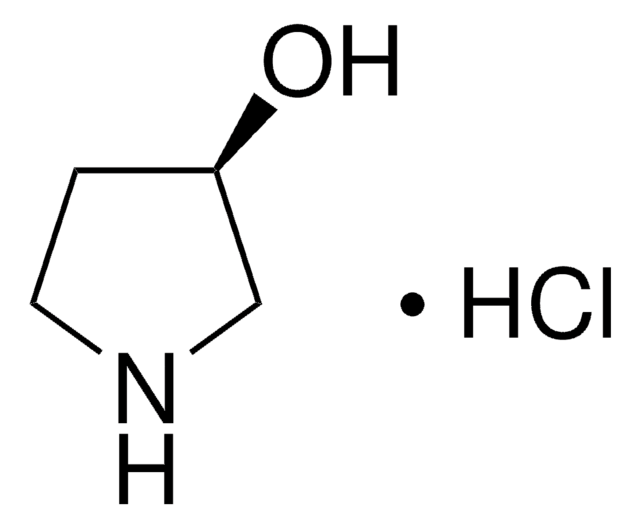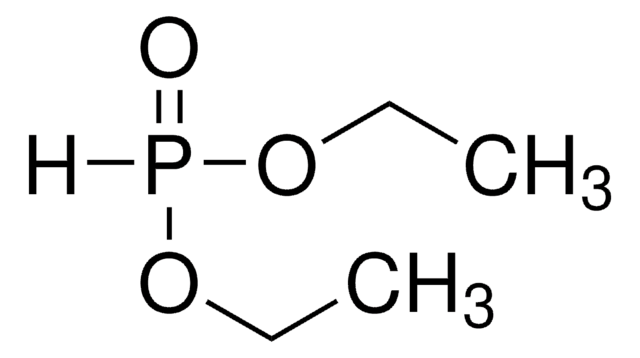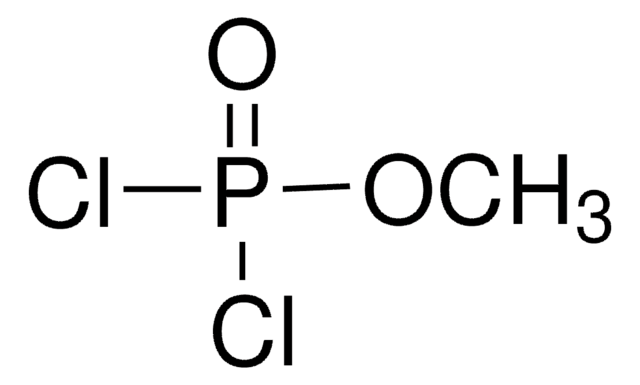推薦產品
應用
氯磷酸二甲酯可用于通过与氰基丙酮酸乙酯的烯醇钾盐反应制备 ( E )-3-氰基磷酸烯醇丙酮酸。可用于合成 2-花生四烯酸甘油醚的单磷酸酯和二磷酸酯。
訊號詞
Danger
危險分類
Acute Tox. 2 Dermal - Acute Tox. 2 Inhalation - Acute Tox. 2 Oral - Eye Dam. 1 - Skin Corr. 1B
儲存類別代碼
6.1A - Combustible acute toxic Cat. 1 and 2 / very toxic hazardous materials
水污染物質分類(WGK)
WGK 3
閃點(°F)
235.4 °F - closed cup
閃點(°C)
113 °C - closed cup
個人防護裝備
Faceshields, Gloves, Goggles, type ABEK (EN14387) respirator filter
客戶也查看了
P Wirsching et al.
Biochemistry, 24(26), 7602-7606 (1985-12-17)
(E)-3-Cyanophosphoenolpyruvate has been synthesized by reacting dimethyl chlorophosphate with the potassium enolate of ethyl cyanopyruvate. The resulting trialkyl ester was deesterified with bromotrimethylsilane followed by potassium hydroxide. Subsequent treatment with Dowex-50-H+ resin and cyclohexylamine afforded the tricyclohexylammonium salt; only the
Juha Juntunen et al.
Journal of medicinal chemistry, 46(23), 5083-5086 (2003-10-31)
The poor aqueous solubility of 2-arachidonyl glyceryl ether (noladin ether) 2 hinders both pharmacological studies and pharmaceutical development. The synthesized mono- and diphosphate esters of noladin ether (4 and 6) considerably increased the aqueous solubility of noladin ether (>40000-fold), showed
Amanda R Wilmsmeyer et al.
Langmuir : the ACS journal of surfaces and colloids, 28(30), 10962-10967 (2012-07-12)
The fundamental interactions of dimethyl methylphosphonate (DMMP) and dimethyl chlorophosphate (DMCP) on amorphous silica nanoparticles have been investigated with transmission infrared spectroscopy and temperature-programmed desorption (TPD). DMMP and DMCP both adsorb molecularly to silica through the formation of hydrogen bonds
Minji Kang et al.
ACS applied materials & interfaces, 11(8), 7686-7694 (2019-02-16)
Quorum sensing (QS) inhibitor-based therapy is an attractive strategy to inhibit bacterial biofilm formation without excessive induction of antibiotic resistance. Thus, we designed Ca2+-binding poly(lactide- co-glycolide) (PLGA) microparticles that can maintain a sufficient concentration of QS inhibitors around hydroxyapatite (HA)
Global Trade Item Number
| 庫存單位 | GTIN |
|---|---|
| 437891-25ML | 4061837657504 |
| 437891-5ML | 4061837657511 |
我們的科學家團隊在所有研究領域都有豐富的經驗,包括生命科學、材料科學、化學合成、色譜、分析等.
聯絡技術服務